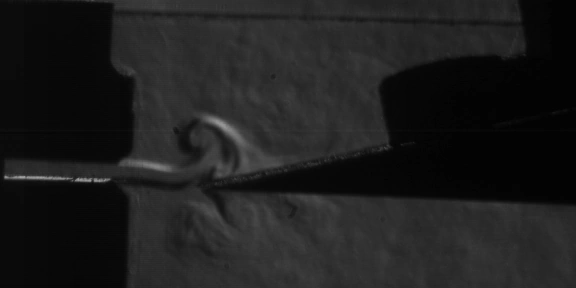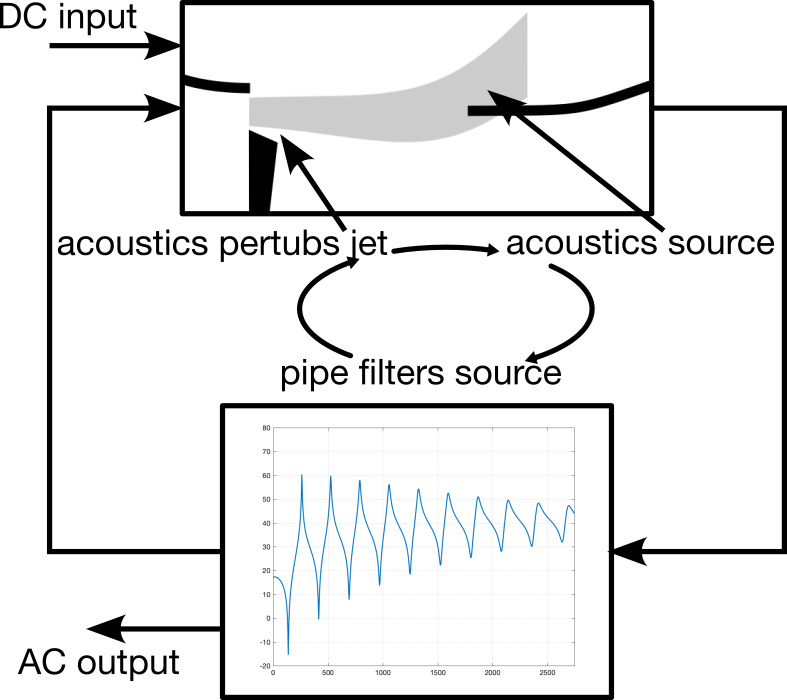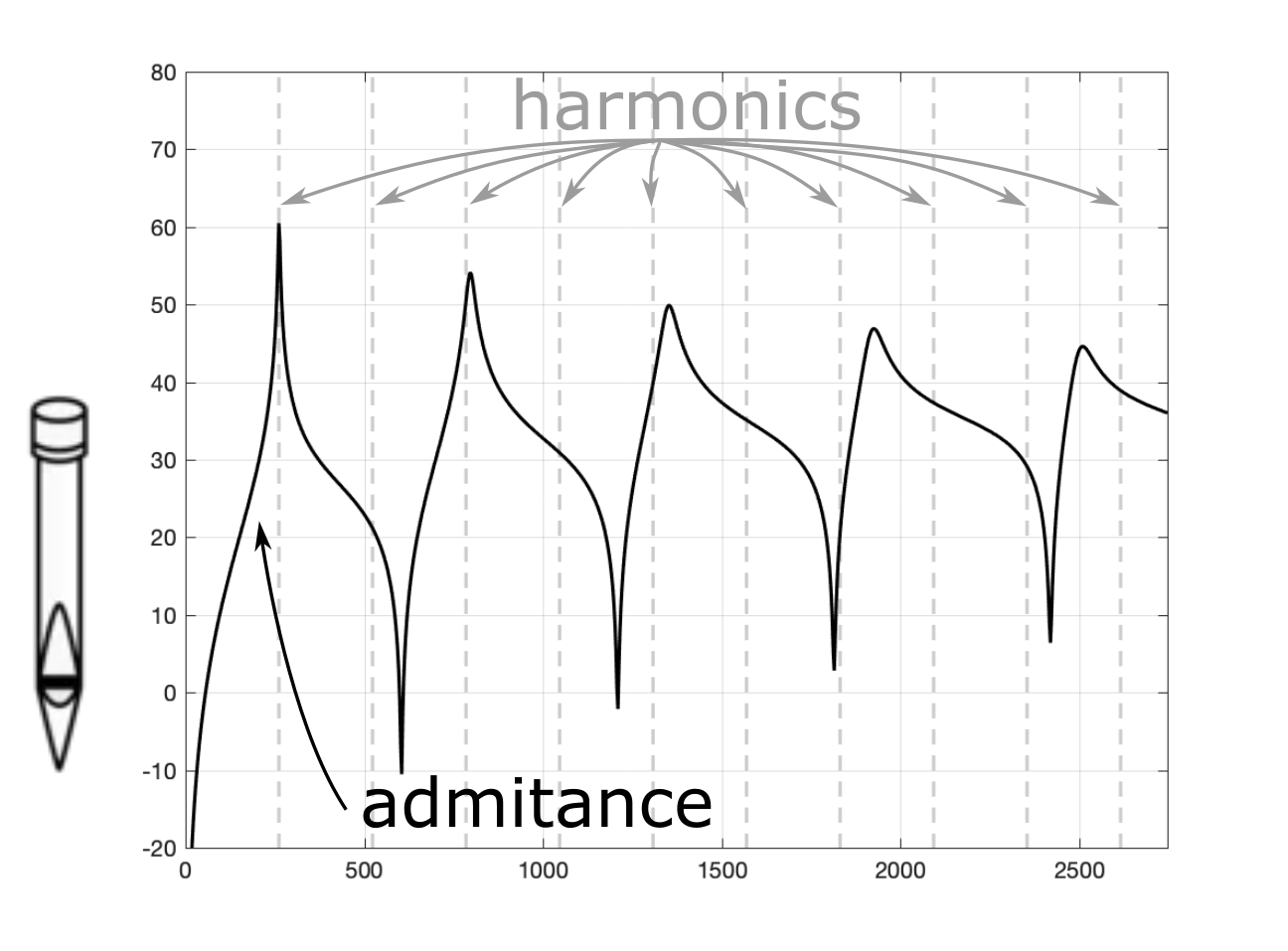Organ Physical Modelling
Organ pipe physics
A pipe converts quasi-steady energy into oscillating energy
The organ pipes belong to the so-called self-sustained instrument family. They transform a continuous energy (the air flow) into a quickly oscillating energy (the acoustic vibration) thanks to a feedback loop. Organ pipes are DC/AC converters!
The feedback loop consists in an exciter and a resonator.
The exciter transforms continuous energy into oscillating energy. In the case of flue pipes, the air jet impacts the labium and creates the acoustic vibration. In the case of reed pipes, the reed beats because of the upstream and creates the acoustic vibration.
The resonator is the air column of the pipe. It filters, accumulates and restores the oscillating energy to the exciter and to the external world.

Flue pipe physics
The sound generation in flue pipe results from the interaction between an air jet and the acoustic vibration of the air column of the pipe. The air jet is induced by the upstream pressure when opening the valve of the pipe.

When the jet impacts the pipe labium, it injects flow from both side of the labium. This flow injection acts as an acoustic pressure source near the mouth of the pipe. The pipe is feed with acoustic energy that can propagate through it. The pipe filters the vibration near the frequencies it prefers: the resonance frequencies.
While the acoustic vibration establishes within the pipe, it modulates the jet propagation: a small acoustic perturbation at the channel exit propagates and grows along the jet. When impacting the labium again, the flow injection is actually modulated by the acoustic vibration that occured earlier at the jet birth. This closes the feedback loop.


During the propagation of the acoustic wave through the pipe, a small amount of energy is radiated outside from the mouth and from the other end. This is the sound that we hear.
In other words, the physics of flue pipe can be seen as an audio feedback, or a Larsen effect, where the jet/labium interaction would be the speaker (it produces sound) and where the pipe would be the microphone (it stores acoustic vibration).
How the pipe shape affects the sound
The pipe acts like a reservoir which stores and restitutes energy at the frequencies it prefers. These are calls resonance frequencies. The pipe can also stores energy at other frequencies, but it is less efficient. The way the pipe is able to store energy for a given frequency is call the admittance: the stronger the admittance, the more energy is stored and restituted.
The scale of the pipe -- ratio diamater/length -- has a strong effect on the resonance frequencies and on the admittance. A narrow pipe has more sharp and closest resonances than a wide pipe. The resonance frequencies of a narrow pipe are closest to the harmonics of the sound, than the ones of a wide pipe. A narrow pipe provides a much reacher sound than a wide pipe.

Gambe

Flute

Bourdon
How the upstream pressure affects the sound
The flue pipe is a phase-locked system. The sound results from a balance between the air jet (exciter) and the pipe (resonator). When increasing the upstream pressure, the jet velocity increases too. To compensate and keep the system balanced, the propagation of the acoustic wave within the pipe is modified, in agreement with what the pipe allows. In the case of a flue pipe, when increasing the upstream pressure, the frequency of the sound increases as well as its intensity. In addition the distribution of the relative energy among the harmonics is modified and so the timbre.


Consequences for the tremulant
The tremulant is a mechanical device that modulates the air flow and thus the upstream pressure of the pipes. There are many types of tremulants. Here is a sketch of a basic one:

As seen in the previous section, lowering or increasing the upsteam pressure affect the pitch, the intensity and the spectral content of the sound. When the upstream pressure is periodically modulated, these three aspects of the sound (pitch, intensity, timbre) are modulated too.


In sample-based organ plugins, the tremulant is emulated using a post effect filter. It is supposed to mimic the modulation described above. In Organteq, the upstream pressure modulation is used as a direct input of the model. The variations of pitch, intensity and timbre are generated by the model itself.